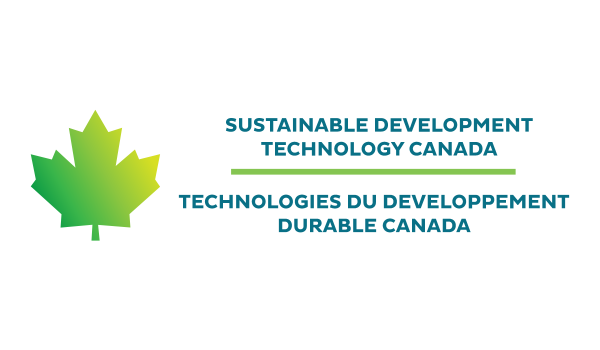ANALYSIS: Government needs to fix problems at Canada’s main cleantech funding organization
 Innovation, Science and Economic Development Canada (ISED) has yet to release the findings of its investigation of alleged conflict of interest and financial mismanagement at Sustainable Development Technology Canada (SDTC), five months after launching the probe.
Innovation, Science and Economic Development Canada (ISED) has yet to release the findings of its investigation of alleged conflict of interest and financial mismanagement at Sustainable Development Technology Canada (SDTC), five months after launching the probe.
ISED may well conclude there has been no wrongdoing at STDC. Nevertheless, some of SDTC’s practices, and ISED’s oversight of SDTC, raise questions about how federal funding is being used to support innovation and commercialization. What difference is this funding actually making to reduce Canada’s greenhouse gas emissions and improve the country’s productivity?
Research Money’s investigation of the allegations found SDTC uses a performance-based compensation system, with corporate performance targets that include allocating and spending a specific amount of funding annually, and funding a specific number of projects every year.
In SDTC’s current corporate plan, the performance management and strategy framework lists performance indicator #1 as: “Total funding allocated to sustainable development projects.” And the performance target is: “Approve $190 million.”
Performance indicator #2 is: “Number of new clean technology projects approved for funding.” And the performance target is: “At least 100 new projects and major modifications to existing projects are approved each year.”
In addition to SDTC’s CEO and vice-presidents, the organization’s directors, managers and project leads all are eligible for performance-based compensation. For example, CEO Leah Lawrence’s annual base salary is between $311,000 to $421,000. She is also eligible for up to $115,000 per year as “additional performance-based compensation.”
The annual base salary for SDTC’s four vice-presidents is between $178,000 to $264,000. Each VP also is eligible for up to $73,000 per year as additional performance-based compensation.
Former SDTC employees, in their allegations against the organization, maintained its performance-based compensation system is distorting SDTC’s mission, leading to wasteful spending of public money.
SDTC responded that many third-party organizations and Crown corporations also use performance-based compensation, and that SDTC’s system is based on the organization’s ability to meet a number of performance metrics outlined in SDTC’s corporate plan.
Other organizations don’t use spending as performance indicator
However, Danielle Burns, researcher/analyst at Research Money, did not find any federally funded organization that uses annual funding allocated or approved as a performance indicator — as SDTC does.
The Natural Sciences and Engineering Research Council of Canada and the Canada Foundation for Innovation both said they don’t use a performance-based compensation system based on spending targets.
The Social Sciences and Humanities Research Council (SSHRC) said its annual performance awards for executives only — not managers — are based on exemplifying key leadership competencies for the public service and achieving a set of government-wide corporate commitments, as well as individual commitments identified at the beginning of each fiscal year.
“Individual commitments vary according to job function — they are not tied to spending more funding nor funding to meet priorities,” according to SSHRC.
SSHRC’s approach is in accordance with the federal government’s “Performance Management Program for Executives,” which states that “executives may earn performance-based compensation that reflects their level of achievement of objectives and their demonstration of key leadership competencies.”
The National Research Council and the Canadian Institutes of Health Research use the same approach — focused on achieving individual objectives and demonstrating key leadership competencies — in awarding performance-based compensation to executives.
The Protein Industries Canada global innovation cluster on the Prairies has a bonus system for the executive team and senior management, based on achieving corporate metrics. However, none of these metrics includes the amount of funding the organization allocates or approves annually.
At SDTC, a project review committee, consisting of nine voting board members of SDTC (in addition to SDTC’s board chair and its CEO as non-voting members of the committee) decides whether to approve projects for funding.
However, Protein Industries Canada uses an independent review committee — which does not include board members or directors — to review and approve projects, including all project milestones and outcomes, as well as maximum investment by the innovation cluster. “There is no connection between those who approve projects or corporate metrics and any potential bonuses,” Protein Industries Canada said.
The Ontario-based Next Generation Manufacturing Canada (NGen) global innovation cluster’s corporate objectives do not include performance targets on the amount of funding provided or the number of projects approved under calls for proposals.
NGen — like Protein Industries Canada — also utilizes a project assessment and selection process that is “totally independent” of the organization’s board.
Canada’s Ocean Supercluster, based in Atlantic Canada, has objectives that include committing funds to projects assessed by external, independent evaluators. But the supercluster doesn’t compensate its employees based on a percentage of committed funds.
The federal Performance Management Program for Executives makes no mention of using annual funding allocated/approved or the number of projects funded in any given year as performance targets to evaluate executives’ performance-based compensation.
The trouble with using these targets is that such a system is susceptible to potential abuse and can lead to wasteful spending of public funds. There is a risk in any federally funded organization that executives and employees will focus on achieving these arbitrary targets, which are tied to their performance-based compensation. That could lead to less-than-worthy projects being funded, just to meet the targets on spending and numbers of projects.
Government’s “use-it-or-lose-it” budget approach is flawed
For the SDTC, the most important criterion for awarding funding to cleantech companies should be, as the SDTC-ISED contribution agreement stipulates, to provide funding for eligible projects which “have the greatest merit.”
SDTC’s executives and employees shouldn’t be motivated by performance targets that reward them for essentially pushing as much public money out the door to fund as many projects as possible in any given year.
If SDTC’s allocated federal funding is not spent in a given fiscal year, typically any unspent money must be returned to the government’s central fund. This means SDTC could receive less money in the next fiscal year, since it was unable to spend all of its allocated funding in the previous year.
This “use-it-or-lose it” budget rule does not just apply to SDTC. It is a peculiar characteristic of government operations and, when it comes to spending public money judiciously, seems fiscally unsound and wasteful.
In Canada, the annual phenomenon called “March Madness” happens as federal government departments urgently try to get money out the door before the start of the new fiscal year on April 1, according to an article by Daniel Dickin in Policy Options, the digital magazine of the Institute for Research on Public Policy.
Research in the U.S. shows federal agencies spend 4.9 times more money more in the last week of their fiscal year than in a typical week during the rest of the year. “When unspent funds expire at the end of the fiscal year, agencies rush to spend their money even when that results in funding lower quality projects,” according to a working paper by the National Bureau of Economic Research.
The private sector does not spend its money this way. The private sector also uses performance-based compensation for executives, for example. However, executives are not rewarded for spending as much of the company’s money as they can in a given year. On the contrary, bonuses are often awarded for bringing a project in under budget or for finding ways to achieve savings or cut costs within the company and, of course, for maximizing return to shareholders.
SDTC’s performance-based compensation system is especially worrisome, given that annual funding for the organization is set to double to $318 million by 2025-26 from just over $157 million last year, according to SDTC’s contribution agreement with the government.
How much of this funding increase is actually driven by a greater number of Canadian cleantech companies requiring assistance? What outcomes are being achieved in terms of innovation, technology commercialization and increased productivity?
In the broader picture, the federal government failed to spend $7.7 billion of the $15 billion it pledged in budgets on a host of climate change initiatives since 2016, according to an analysis by the Toronto Star. Meanwhile, Canada’s greenhouse gas emissions have continued to increase during the past three decades, according to a 2021 report by the Office of the Auditor General of Canada.
If the current level of federal spending on climate initiatives is not being spent, and if the government’s investment in cleantech is failing to significantly reduce Canada’s greenhouse gas emissions, where is the logic in increasing this amount of spending? Before spending any more taxpayers’ money, shouldn’t government at least do a comprehensive, objective and independent assessment of why the current approach isn’t working?
SDTC’s “mission creep” is problematic
If the “spending creep” in SDTC is worrisome, so is the apparent mission creep in the organization.
SDTC’s current contribution agreement with ISED states that the goal of SDTC funding is to fund and support projects at the “pre-commercial and demonstration stages.” (Emphasis mine).
However, to address a “gap in Canada’s funding ecosystem,” according to SDTC, the organization’s funding envelope was broadened to include scale-up companies in 2020, as part of SDTC’s most recent recapitalization. According to SDTC, its scale-up funding stream is designed to support small-to-medium size companies that have begun to generate annual revenues, yet still need to invest in innovation, research, and development in technology advancements that are pre-commercial.
Yet one of the concerns raised in the allegations by former SDTC employees is that SDTC is now providing significant funding to multi-million-dollar commercial companies, which are generating revenues and profits and acquiring other firms. That is outside of the scope of SDTC’s original mission, they argue.
For example, SDTC in 2022 awarded $17 million to SemiosBio Technologies and $16.6 million to Miovision Technologies — among the highest amounts of funding ever awarded for SDTC-supported projects. SDTC awarded this funding, despite initial recommendations by third-party expert reviewers (which the SDTC uses as part of its evaluation process) that SemiosBio did not need SDTC funding, because the company was generating revenue and making acquisitions, and that Miovision’s funding application was deficient and should be rejected.
Apart from raising questions about the effectiveness and objectivity of SDTC’s evaluation process, why is SDTC now funding successful, growing cleantech companies? If companies at this stage still require R&D funding for new innovations that can compete in the global marketplace, they can — like their international competitors — raise venture capital. Or they can turn to other sources of federal funding and support, of which there are many.
For example, the federal Strategic Innovation Fund (SIF) exists to provide “major investments in innovative projects that will help grow Canada’s economy for the well-being of all Canadians.” SIF provides funding in two categories, including “Business Innovation and Growth projects led by individual companies seeking funding to support their businesses.” These projects can include R&D to test the commercial potential of early TRL (Technology Readiness Level) concepts, and development and improvement of current products by implementing new technology to enhance the company’s competitive capability.
That sounds a lot like the SDTC funding — and the rationale SDTC used to award that funding —provided to SemiosBio and Miovision. So why is SDTC essentially now providing the same sort of support as SIF?
Lots of federal funding and support available
Along with SIF, the National Research Council’s Industrial Research Assistance Program “provides advice, connections and funding to help Canadian small and medium-sized businesses increase their innovation capacity and take ideas to market.”
Scaling companies like SemiosBio and Mivision can also turn to the Business Development Bank of Canada, a federal Crown corporation which offers financing for high-growth companies looking to finance a new project or business transition. BDC also offers minority equity investments for mid-market growth companies looking to grow exponentially.
For the cleantech sector, BDC has committed $1 billion overall in cleantech fund investments, including a $400-million fund launched in 2022.
Export Development Canada (EDC), another Crown agency, also has been increasing the amount of direct private capital investments into domestic technology startups wanting to export their products and services to international markets. In fact, EDC has made cleantech a priority for the past 10 years and, in 2022, supported $8.8 billion in business facilitated — including exports, foreign investment, and trade development activities — in the cleantech sector.
According to a new report by Statistics Canada, the number of cleantech beneficiaries from federal funding increased from 436 to 1,335 enterprises between 2016 and 2020. The total value of federal support in the cleantech sector increased from $84 million to $394 million in the same period,
So where is the “gap in Canada’s funding ecosystem” SDTC cited in broadening the organization’s funding envelope in 2020 to include scale-up companies?
The real problem appears to be not a lack of government funding for research and innovation, but — as the recent “Bouchard report” by the Advisory Panel on the Federal Research Support System noted — a federally funded research and innovation enterprise that is disjointed and lacks a national strategy and vision for the Canadian science, research, and innovation ecosystem.
“There is significant fragmentation across the system, with granting councils and a number of other different and disconnected entities often tasked with similar but uncoordinated mandates, many of which are sub-scale,” according to the Bouchard report.
Rather than spending still more money on Canada’s research and innovation enterprise — while continuing to fall behind other countries in productivity — it would make more sense for the federal government to, as the Bouchard report recommended, first take steps to ensure that funding for this vital enterprise is well-coordinated, integrated and achieving measurable and meaningful outcomes.
Is ISED adequately overseeing Canada’s innovation portfolio?
Another troublesome aspect of the SDTC situation is whether ISED — and the federal government more broadly — is adequately overseeing and reporting on SDTC’s operation in a timely fashion.
Does ISED, which leads the federal innovation, science, and economic development portfolio that now includes 46 programs and initiatives, have sufficient capacity and technical expertise within its bureaucracy to properly oversee these myriad and complex programs and initiatives and report to Canadians on what they are actually achieving?
For example, ISED’s current contribution agreement with SDTC requires that an evaluation of SDTC be completed by ISED’s minister “no later than March 31, 2023.”
This evaluation is conducted to examine SDTC’s program relevance (need for funding), performance and efficiency, in accordance with the Treasury Board’s Policy on Results.
Minister François-Phillipe Champagne has completed his evaluation, but five months after the evaluation’s due date, it has yet to conclude the Treasury Board’s approval process, which includes approval by the Treasury Board’s deputy minister. As a result, the results of Champagne’s evaluation have yet to be publicly released.
Champagne’s evaluation is separate from an audit by ISED’s audit and evaluation arm, examining SDTC’s governance, risk management, and internal controls. This audit is supposed to be done every five years (the previous one was done in 2018) but hasn’t yet been approved by ISED internal governance. So the results of this evaluation also have yet to be publicly released.
As noted above, the results of ISED’s investigation into allegations of conflict of interest and financial mismanagement at SDTC also have yet to be publicly released. That’s a lot of overdue “homework.”
Surely ISED and the Treasury Board can do a better job in coordinating to ensure that evaluations of SDTC and other federal innovation funding organizations are completed and publicly released when they’re due. A private sector company wouldn’t last very long if it didn’t deliver its corporate reports on schedule to shareholders.
Canadian taxpayers are essentially the “shareholders” of federally funded innovation organizations. They deserve to know, in a timely fashion, how these organizations are performing, whether they’re being governed responsibly, and if they’re actually delivering meaningful “returns” on taxpayers’ investment that improve Canada’s environment and prosperity.
R$
Events For Leaders in
Science, Tech, Innovation, and Policy
Discuss and learn from those in the know at our virtual and in-person events.
See Upcoming Events
You have 0 free articles remaining.
Don't miss out - start your free trial today.
Start your FREE trial Already a member? Log in
By using this website, you agree to our use of cookies. We use cookies to provide you with a great experience and to help our website run effectively in accordance with our Privacy Policy and Terms of Service.





